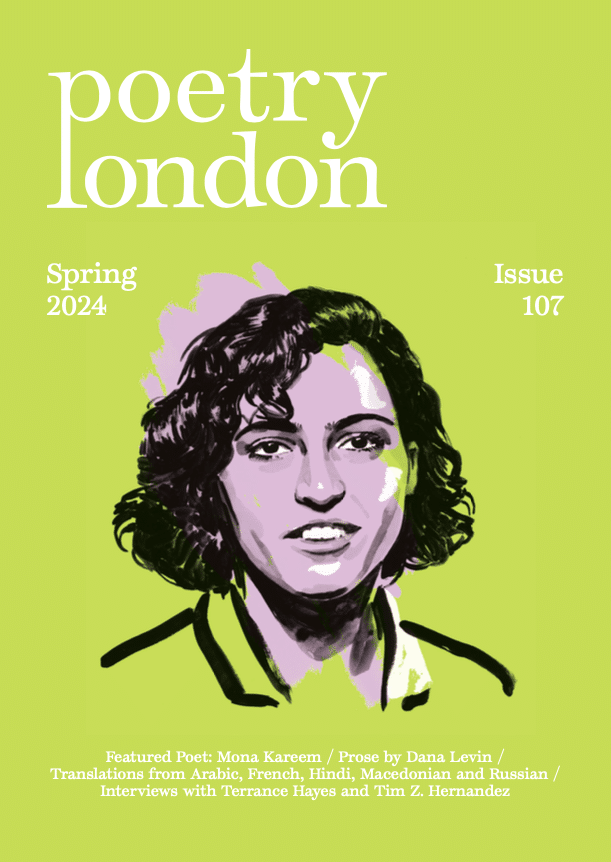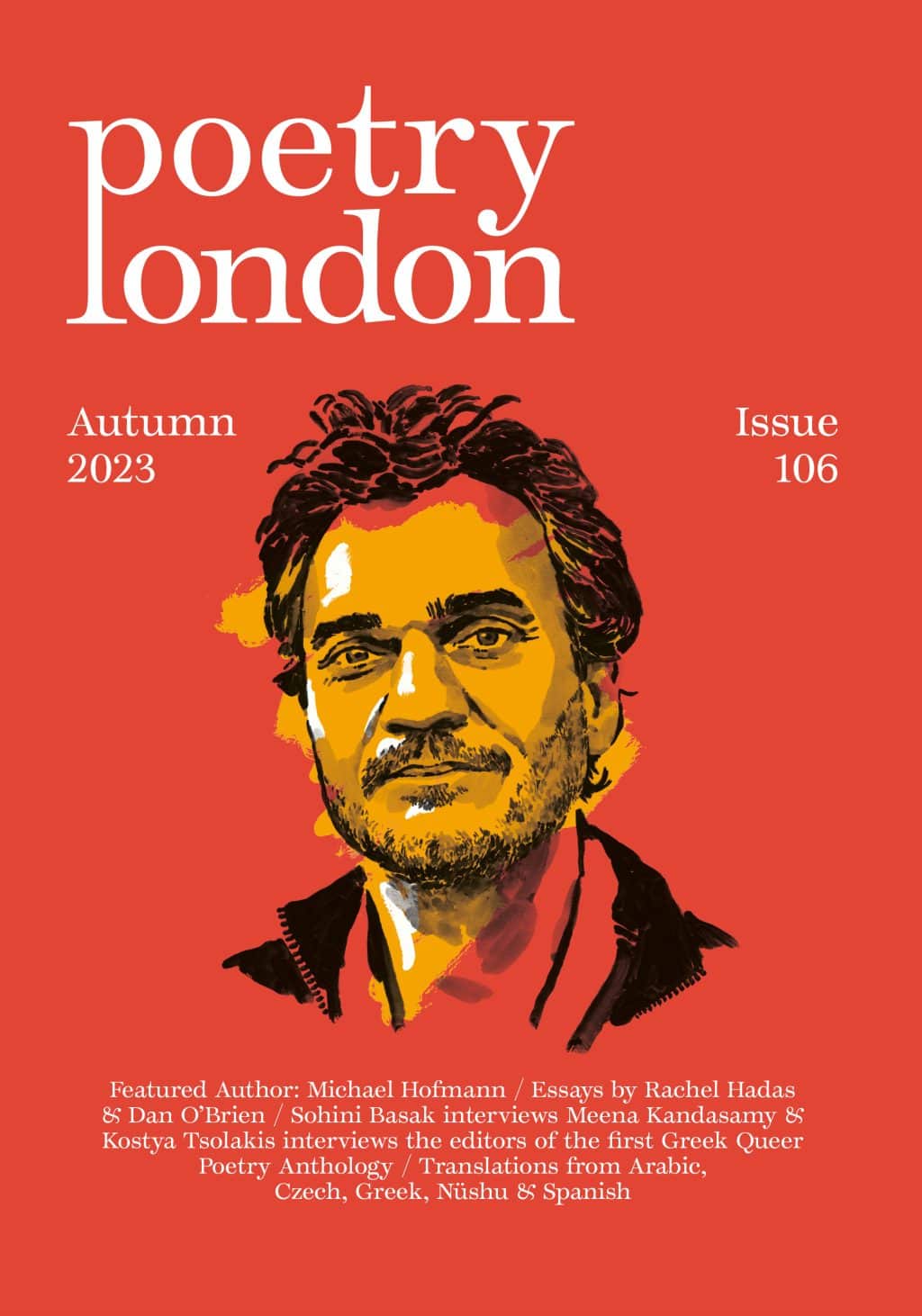The Gaelic Objectivists
David Wheatley on a new anthology of Early Irish poetry
Maurice Riordan (Editor)
The Finest Music: An Anthology of Early Irish Lyrics
Faber £14.99
Seamus Heaney was not the first Ulster poet to travel south to my native County Wicklow. In the course of some translation work for Patrick Crotty’s Penguin Book of Irish Poetry, I read James Carney’s essay ‘The Irish Bardic Poet’, a study of the Fermanagh bard Eochaidh Ó hEodhasa and his time at the court of Wicklow chieftain Fiach Mac Aodha Ó Broin. The bard’s role in public life at the time was second only to that of the chieftain, and among the oddities of his job was the sharing of a bed with his boss and the composing of poems expressing resentment of the third person present, the chieftain’s wife. When Eochaidh died, he was the subject of an anonymous elegy, ‘On the Death of a Poet (Composed During the Last Illness of Eochaidh Ó hEodhasa)’, a poem of ravishing beauty and which to my shame I’d never previously encountered. I knew a thing or two, I thought, about Irish-language poetry, but here was a window into a strange and wonderful world I’d never really understood before.
My encounter with this poem was courtesy of Osborn Bergin’s Irish Bardic Poetry, a major source for Maurice Riordan’s The Finest Music. Bergin was one of several turn-of-the-twentieth-century Celtic philologists who are both the blessing and bane of early Irish writing in translation. A blessing, given the heroic work they did for the cause, as celebrated in a doggerel ballad by Myles na gCopaleen (‘My song is concernin’ / Three sons of great learnin…’), and a bane for one simple reason: they simply could not write readable English. Early Irish literature has had its share of skilled translators down the years, from Frank O’Connor to Ciaran Carson and Paul Muldoon (all three of whom feature in The Finest Music), and Thomas Kinsella and Seán Ó Tuama published their invaluable bilingual anthology An Duanaire, 1600–1900: Poems of the Dispossessed in 1981, but what was needed was a reimagining of early Irish writing, a book that would do for it what Greg Delanty’s anthology The Word Exchange has done for Anglo-Saxon poetry.
All of which makes Maurice Riordan’s The Finest Music a singularly welcome book. I’ve followed Riordan in using the epithet ‘early’ to describe the poems gathered here, but some terminological small print may be required at this point. Like Ancient Gaul, the history of the Irish language divides into three parts: Old (sixth to tenth century), Middle (eleventh and twelfth), and Modern thereafter, though Early Modern Irish only evolved into the tongue spoken now in the seventeenth century. For much of this history, Irish and Scots Gaelic were the same language, as reflected in the Scottish provenance of many classical ‘Irish’ poems written by Colmcille, Muireadhach Albanach Ó Dálaigh and other ‘sea-divided Gaels’.
Riordan’s focus is on Old and Middle Irish, though with some slight chronological casuistry. Thus, poems from the Fionn cycle are included despite their composition in the sixteenth century, on the basis of roots in earlier folk versions. The core of the book is poems written by monks, often in the margins of illuminated manuscripts. One well-known example is ‘Pangur Ban’, a poem addressed to a cat (always useful animals to have around rat-infested monasteries), and translated here by Paul Muldoon. Riordan notes that scholars have sometimes attributed this poem to Sedulius Scottus, the ninth-century Latin scribe, which would cast an interesting light on the coexistence of the Latin and Irish-language traditions. One way in which the Irish scribes were able to innovate across both languages was by introducing spaces between words: Sedulius Scottus has a plausible claim to being the Charles Olson of his time, allowing perceptions to be grasped in their discrete haecceitas for the very first time.
Was the ascetic setting of these poems an accurate reflection of their authors’ lives or merely a convention? Scholars have argued the toss but, as Riordan writes, ‘The truth is we know almost nothing of these poets’ lives’. One unusual factor we are aware of is the Mediaeval Warm Period, whose influence Riordan links to descriptions of Ireland as a paradisal isle where hermits and other strays like Mad King Sweeney live in the open on a diet of watercress, nuts and berries. Myles na gCopaleen (to invoke that jester of Gaeldom again) had a theory of his own not unlike TS Eliot’s ‘dissociation of sensibility’ to explain the Edenic innocence of these poems. In the aos óir or golden age of Irish poetry, which lasts until the twelfth century, the bard produces an ‘exact, direct account of the world, without any mention of the poet himself’. Thereafter nature becomes a mere ‘mirror of the poet’s mind’ and the tragic fall into modernity has begun.
It’s a fanciful analysis, but it’s hard to read these crystalline lyrics without feeling oneself in the presence of a Gaelic proto-Objectivist school, boiling perception down to its impersonal, diamond-hard absolutes. Some examples: Seamus Heaney’s version of ‘Int én gaires asin tsail’:
Birdsong from a willow tree.
Whet-note music, clear, airy;
Inky treble, yellow bill –
Blackbird, practising his scale.
And Derek Mahon’s ‘The Bangor Blackbird’:
Just audible over the waves
a blackbird among leaves
whistling to the bleak
lough from its whin beak.
Among the other highlights of the book are ‘Song of the Woman of Beare’ by Eiléan Ní Chuilleanáin and ‘from Marbhan and Guaire’ by Paul Muldoon (the eagle-eyed will have noticed these poems can also be found in those two poets’ latest books) and a generous sequence of versions by Ciaran Carson. It’s pleasing to find Paul Batchelor and Kathleen Jamie among the translators too, reminding us that these poems do not belong exclusively to Irish poets.
I was sorry not to see any work included from Trevor Joyce’s Courts of Earth and Air (2008). Joyce translates in a more jagged style than most of Riordan’s translators, but if there’s room at the inn for Tennyson’s ‘The Voyage of Maeldune’ (a ‘dreadful’ poem, according to Muldoon) there should be some for a touch of neo-modernism too. Still in the nineteenth century, Riordan draws an intriguing comparison between Macpherson’s Ossian poems / forgeries (an important reference point for Victorian Celticizing) and Yeats’s syntheses of Irish legend in his early work, ‘onlie begetter’ of so much modern Irish poetry. The element of fakery is not so easily disposed of as one might like, in other words, when it comes to poetry in translation. One benefit of acknowledging this fact is the purge it performs on delusions of translation as an exercise in ethnic authenticity, a syndrome nowhere in sight in The Finest Music. Rarely as a reviewer have I read a book and so desired to inhabit its imaginative world. I only wish it were longer. The neo-tenth-century Gaelic Objectivist revival starts here.

